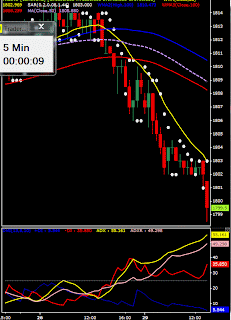FKLI Futures Trading - Bursamalaysia
This will chronicle trading in the FKLI & FCPO futures. If you don't like what you see/read in this blog, just surf away. These opinions are our personal opinions and just a record of our thoughts..."In evolution, it’s not the biggest, the fiercest nor the smartest that survive, it’s the one that changes the fastest.” I.e. the key word is to adapt the trading style to the markets, until it stops working
Wednesday, July 31, 2013
Tuesday, July 30, 2013
Those who know don't talk, those who talk don't know
.
KLCI shows its true colours ends down, against the regional trend, as usual
Among the key regional markets:
Japan's Nikkei 225 staged a rebound and rose 1.53% to13,869.82;
Hong Kong's Hang Seng Index rose 0.48% to 21,953.96;
Shanghai's Composite Index rose 0.7% to 1,990.06;
Taiwan's Taiex rose 0.98% to 8,163.55
South Korea's Kospi rose 0.9% to 1,917.05 and
Singapore's Straits Times Index tose 0.26% to 3,245.45.
US light crude oil fell 60 cents to US$103.95 and Brent lost 14 cents to US$107.31.
Spot gold fell US$6.25 or 0.47% to 1,321.85.
Monday, July 29, 2013
Why there is no such thing as a bad market
It is only human to become discouraged when trading goes badly. Despite the best intentions and attempts at an objective and disciplined approach, most trades tum out losers. We all have moments like these, myself included. I have found that the best strategy for such periods is to close out all positions and stand aside from the market, for as long as it takes to get your head cleared and your attitude to become more positive. The market will be there, you can be sure,, when you return to action. I am reminded of a story told about Dickson W/atts, a famous old-time cotton trader from the 19th century. When asked for advice by a fellow-trader who claimed that the large size of his position kept him awake at night, Watts had the following to-the—point advice: ‘sell down to a sleeping level.’ It is still a sound advice.
Sunday, July 28, 2013
Labels: music
Friday, July 26, 2013
Thursday, July 25, 2013
Wednesday, July 24, 2013
Labels: music
Labels: music
Tuesday, July 23, 2013
Monday, July 22, 2013
An informative 'story' for traders by Stanley Kroll
On how "those who know don't tell, those who tell don't know"
Sunday, July 21, 2013
Saturday, July 20, 2013
Labels: nq
Friday, July 19, 2013
Labels: larry hite
Thursday, July 18, 2013
"Analyse your markets and lay out your strategy and tactical moves in advance, and in privacy. Don't ask anyone's advice, and that includes' brokerage advisories, tips and even well-intentioned market gossip. And, don't offer your advice to anyone else. You shouldn't care if Shearson is buying ABC or if Salomon is selling XYZ. You should stick to your objective analysis and market projection based on whichever method or technique has proven viable for you; and you should revise that strategy only on the basis of pragmatic and objective technical evidence. Such evidence could be a signal from your chart analysis, your computer system or from the margin department, which reminds you that your position has moved adversely and that your account has become undermargined"
"There is the plain fool who does the wrong thing at all times anywhere, but there is the Wall Street fool who thinks he must trade all the time."J Livermore


From Dragons and Bulls by Stanley Kroll
Introduction and Foreword
The Importance of an Investment Strategy
5 The Art of War, by Sun Tau (circa 506 BC) and The Art of Trading Success (circa AD 1994)
That's the way you want to bet
Long-term v Short term trading
Technicals v Fundamentals
Perception v Reality
Part 1: Winners and Losers
Part 2: Winners and Losers
Sun Tzu: The Art of War
Those who tell don't know, those who know don't tell
Why there is no such thing as a "bad market"
The Secret to Trading Success
The Experts, do they know better?
Risk control and money management
Larry Hite: The Billion Dollar fund Manager
Systems Trading:Kroll's Suggested Method
Buy the Strength Sell the Weakness
Good advice
The 'good bets' business by Larry Hite
Don't lose your shirt
Ed Sykota's secret trend trading system

















































